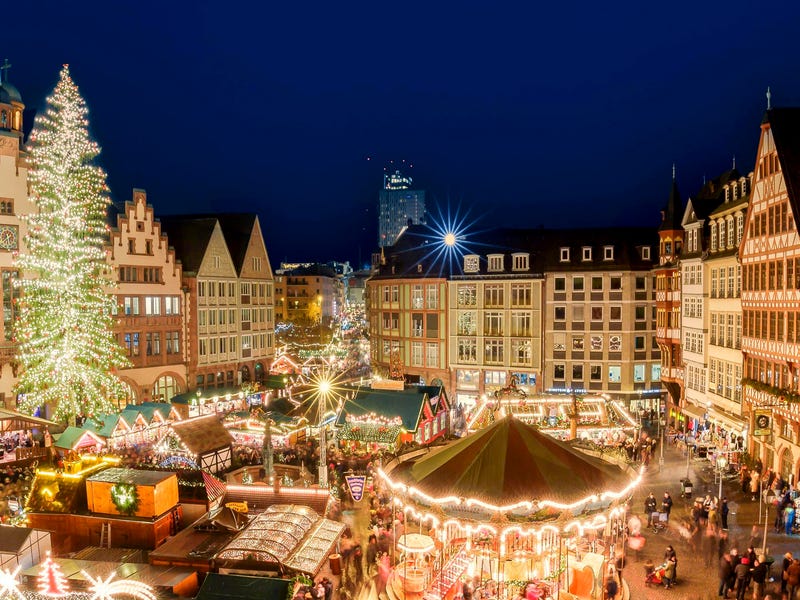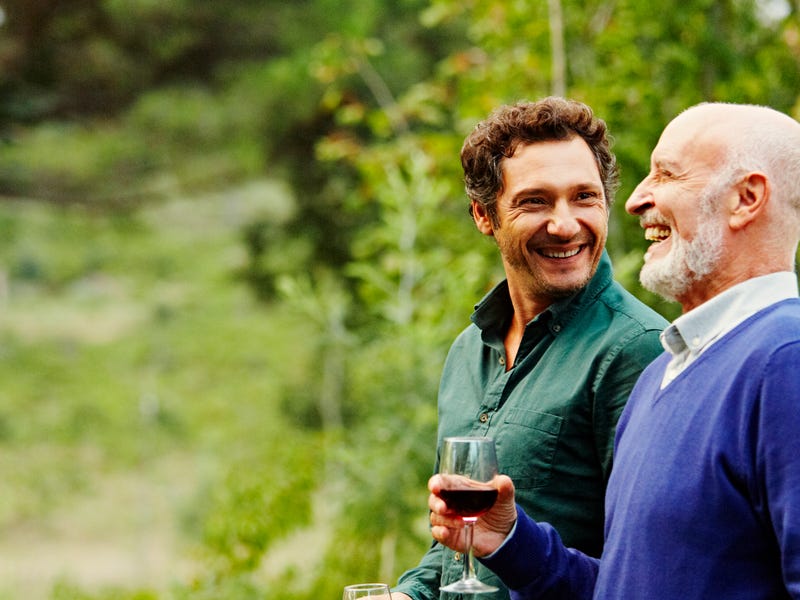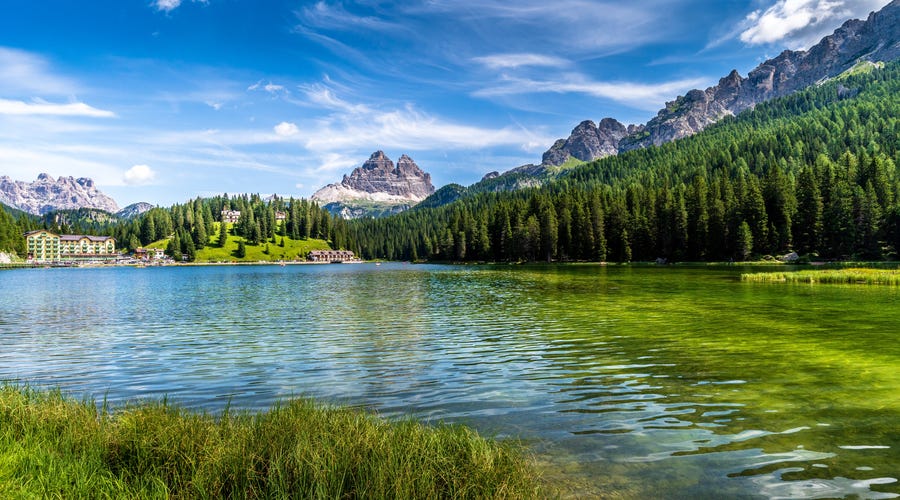
129 geography words in German to spark your wanderlust

Author
Germany, Austria and Switzerland all have scenic landscapes to offer, including countless breathtaking lakes and impressive mountain chains - from the beachy coastline of the North Sea to the snowy mountain tops of the Alps.
There’s so much beauty in nature, which makes it a great topic to talk about when you’re learning German. It includes fascinating landscape features including different bodies of water and landforms that will never let you run out of things to talk about in German.
Learning about geography in German can also help you:
- Plan your next camping or hiking trip to a German-speaking country
- Find the most impressive natural landmarks when traveling
- Find your way when the person you’re asking is referring to landmarks as reference points
- Strike a conversation about the landscape with a German-speaker
- Write a pretty nature poem in German
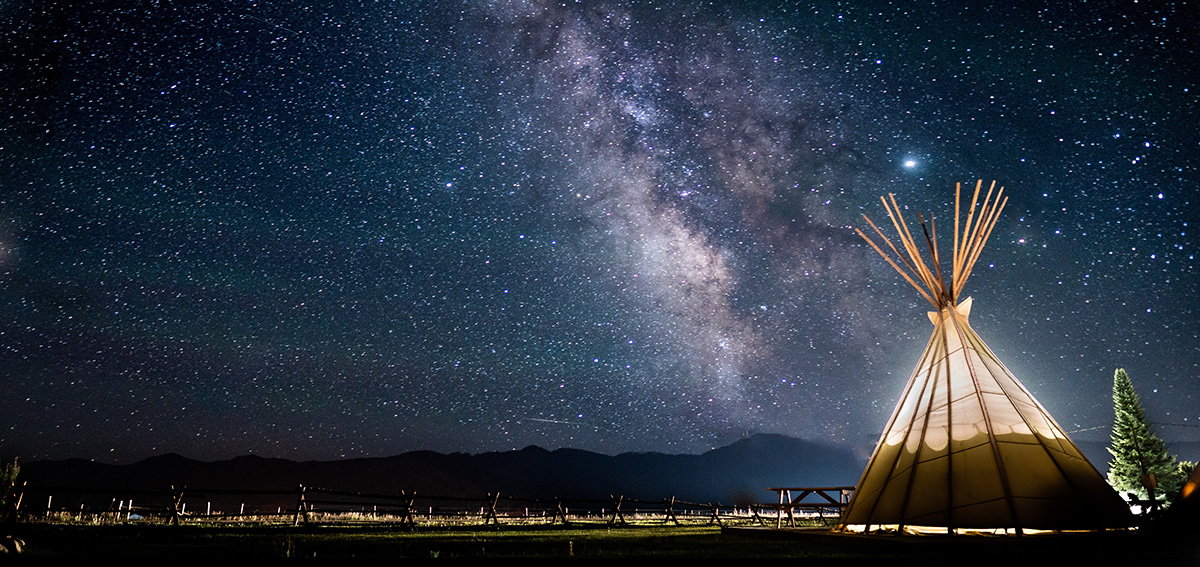
How do you say “landforms” and “water bodies” in German
We’ll teach you some of the most important geography terms, from rivers and oceans to hills and mountains in German.
“Landforms” in German are “Oberflächenformen” [ˈoːbɐˌflɛçn̩ˈfɔʁmən]. If you break down the word, it’s a lot less intimidating:
“Oberfläche” means “surface (literally: upper area) and “Formen” means “shapes”.
The German word for “Water bodies” is even simpler: Gewässer.
The most common landforms and bodies of water in German
When you’re learning the most commonly used landform terms in German, some of the categories may overlap, but we’ll do our best to keep it as logical as possible, starting with coastal and oceanic landforms.
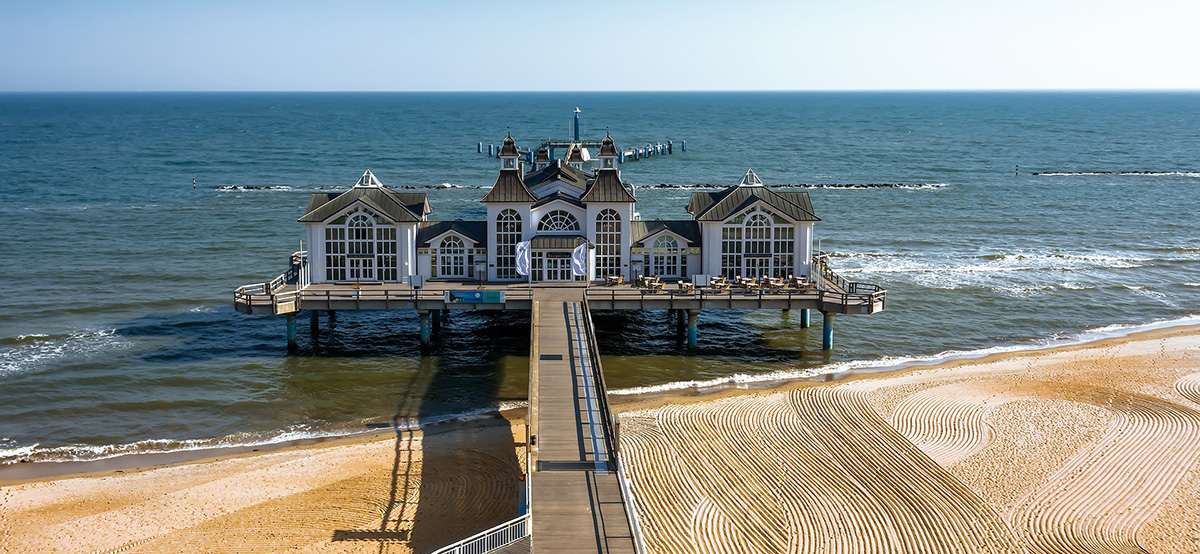
Coastal and oceanic landforms in German
Austria and Switzerland are landlocked countries but a long stretch of Northern Germany borders on the Baltic Sea and the North Sea. You may not typically think of Germany as a country with many beaches but the reality looks very different!
You can find a long shoreline and countless beautiful beachy islands in Germany like Föhr, Sylt and Rügen.
| English | German | IPA |
| Archipelago | Der Archipel | [ˌaʁçiˈpeːl] |
| Coral reef | Das Korallenriff | [koˈʁalənˌʁɪf] |
| Atoll | Das Atoll | [aˈtɔl] |
| Natural arch | Das Felsentor | [ˈfɛlzn̩toːɐ̯] |
| Volcanic arc | Der Vulkanbogen | [vʊlˈkaːnˈboːɡn̩] |
| Barrier island | Die Barriereinsel | [baˈʁi̯eːʁəˈɪnzl̩] |
| Beach | Der Strand | [ʃtʁant] |
| Blowhole | Das Blowhole | [bləʊhɔʊ̯l] |
| Channel | Der Kanal | [kaˈnaːl] |
| Cape | Das Kap | [kap] |
| Cliff | Die Klippe | [ˈklɪpə] |
| Calanque | Die Calanque | [kaˈlɑ̃k] |
| Coast | Die Küste | [ˈkʏstə] |
| Shore | Das Ufer | [ˈuːfɐ] |
| Bay; Bight | Die Bucht | [bʊxt] |
| Dune | Die Düne | [ˈdyːnə] |
| Estuary | Das Ästuar | [ɛstuˈaːɐ̯] |
| Firth | Der Meeresarm | [ˈmeːʁəsˌʔaʁm] |
| Fjord | Der Fjord | [fjɔʁt] |
| Geo | Das Geo | [ˈɡeo] |
| Gulf | Der Golf | [ɡɔlf] |
| Inlet | Das Inlet; schmaler Meeresarm oder Flussarm | [ˈɪnlɛt; ˈʃmaːlɐ ˈmeːʁəsˌʔaʁm ˈoːdɐ ˈflʊsˌʔaʁm] |
| Island | Die Insel | [ˈɪnzl̩] |
| Islet | Die kleine Insel | [ˈklaɪ̯nə ˈɪnzl̩] |
| Lagoon | Die Lagune | [ˌlaˈɡuːnə] |
| Peninsula | Die Halbinsel | [ˈhalpˌʔɪnzl̩] |
| Sea cave | Die Meereshöhle | [ˈmeːʁəsˈhøːlə] |
| Sea mount | Der Tiefseeberg | [ˈtiːfˌzeːbɛʁk] |
| Shoal | Die Sandbank | [ˈzantˌbaŋk] |
| Spit | Die Nehrung | [ˈneːʁʊŋ] |
Erosion landforms in German
Erosion is the process that wears out earthen materials through wind and water. While this process often seems destructive, it’s brought us some of the most beautiful landscape features such as canyons, caves and fjords.
| English | German | IPA |
| Canyon | Der Canyon; die Schlucht | [ˈkɛnjən; ʃlʊxt] |
| Cave | Die Höhle | [ˈhøːlə] |
| Cliff | Die Klippe | [ˈklɪpə] |
| Fjord | Der Fjord | [fjɔʁt] |
| Badlands | Das Ödland | [ˈøːtlant] |
| Butte | Der Härtling | [ˈhɛʁtlɪŋ] |
| Erg | Der Erg | [ɛrᵊx] |
| Gully | Die Erosionsrinne | [eʁoˈzi̯oːnsˈʁɪnə] |
| Hogback | Die Schichtrippe | [ʃɪçtˈʁɪpə] |
| Mesa | Der Tafelberg | [taflbɛʁk] |
| Ridge | Der Gebirgskamm | [ɡəˈbɪʁksˌkam] |
| Tor | Das Tor | [toːɐ̯] |
| Valley | Das Tal | [taːl] |
| Wind gap | Der Strunkpass | [ʃtʁʊŋkpas] |
Fluvial landforms
Fluvial landforms are shaped by running water. They dominate many of our landscapes, even those that seem arid today.
| English | German | IPA |
| River | Der Fluss | [flʊs] |
| River island | Die Flussinsel | [flʊsˈɪnzl̩] |
| Shoal | Die Sandbank | [ˈzantˌbaŋk] |
| Spring | Die Quelle | [ˈkvɛlə] |
| Aid | Der Werder | [ˈvɛʁdɐ] |
| Bench | Die Schorre; die Brandungsplattform | [ʃɔɐ̯ə; ˈbʁandʊŋsˈplatˌfɔʁm] |
| Esker | Der Os | [oːs] |
| Floodplain | Die Flussaue | [flʊsˈaʊ̯ə] |
| Levee | Der Deich | [daɪ̯ç] |
| Marsh | Der Sumpf | [zʊmp͡f] |
| Swamp | Der Bruch | [bʁʊx] |
| Meander | Der Mäander | [mɛˈandɐ] |
| Stream | Der Strom | [ʃtʁoːm] |
| Riffle | Die Stromschnelle | [ˈʃtʁoːmˌʃnɛlə] |
| Waterfall | Der Wasserfall | [ˈvasɐˌfal] |
Impact landforms in German
When a large object hits the earth, this of course impacts its surface. 15 Million years ago for example, an asteroid hit the earth where Bavaria is today and the result is a huge crate called the “Nördlinger Ries” that is still very visible today.
| English | German | IPA |
| Crater | Der Krater | [ˈkʁaːtɐ] |
| Meteor crater | Der Meteorkrater | [meteˈoːɐ̯ˌkʁaːtɐ] |
| Impact crater | Der Einschlagkrater | [ˈaɪ̯nˌʃlaːkˈkʁaːtɐ] |
| Complex crater | Komplexer Krater | [kɔmˈplɛksɐ ˈkʁaːtɐ] |
| Cratered landscape | Die Kraterlandschaft | [ˈkʁaːtɐˌlantʃaft] |
| Crater lake | Der Kratersee | [ˈkʁaːtɐˌzeː] |
Mountains and glacial landforms in German
Austria, Switzerland and the South of Germany are highly mountainous as Europe’s highest and most extensive mountain range, the Alps, stretches through all three countries. This gives these countries their distinctive look that brings to mind charming little mountain towns, surrounded by the beautiful snowy Alps.

| English | German | IPA |
| Hill | Der Hügel | [ˈhyːɡl̩] |
| Mountain | Der Berg | [bɛʁk] |
| Ridge | Der Kamm | [kam] |
| Glacier | Der Gletscher | [ˈɡlɛt͡ʃɐ] |
| Crevasse | Die Gletscherspalte | [ˈɡlɛt͡ʃɐˌʃpaltə] |
| Glacier cave | Die Höhle | [ˈhøːlə] |
| Mountain range | Das Gebirge | [ɡəˈbɪʁɡə] |
| Mountain chain | Die Gebirgskette | [ɡəˈbɪʁksˌkɛtə] |
| Mountain pass | Der Gebirgspass | [ɡəˈbɪʁksˌpas] |
| Arête | Der Gebirgsgrat | [ɡəˈbɪʁɡsɡʁaːt] |
| Cirque | Das Kar | [kaːɐ̯] |
| Col | Die Scharte | [ˈʃaʁtə] |
| Cove | Die Einbuchtung | [ˈaɪ̯nˌbʊxtʊŋ] |
| Dirt cone | Der Sandkegel | [zantˈkeːɡl̩] |
| Valley | Das Tal | [taːl] |
| Side valley | Das Seitental | [ˈzaɪ̯tn̩taːl] |
| Highland | Das Hochland | [ˈhoːxˌlant] |
| Summit | Der Gipfel | [ˈɡɪp͡fl̩] |
| Inselberg | Der Inselberg | [ˈɪnzl̩bɛʁk] |
| Outwash plain | Der Sander | [ˈzandɐ] |
Volcanic landforms in German
Did you know there were more than 30 volcanoes in Germany? Don’t worry about them when you’re visiting though. The last one erupted around 11,000 years ago!
| English | German | IPA |
| Geyser | Der Geysir | [ˈɡaɪ̯ziːɐ̯] |
| Lava | Die Lava | [ˈlaːva] |
| Magma | Das Magma | [ˈmaɡma] |
| Volcano | Der Vulkan | [vʊlˈkaːn] |
| Shield volcano | Der Schildvulkan | [ˈʃɪltvʊlˌkaːn] |
| Supervolcano | Der Supervulkan | [ˈzuːpɐvʊlˌkaːn] |
| Caldera | Die Caldera | [kalˈdeːʁa] |
| Guyot | Die Tiefseekuppe | [ˈtiːfˌzeːˈkʊpə] |
| Seamount | Der Tiefseeberg | [ˈtiːfˌzeːˈbɛʁk] |
| Lava dome | Der Lavadom | [ˈlaːvadoːm] |
| Lava field | Das Lavafeld | [ˈlaːvaˌfɛlt] |
| Lava lake | Der Lavasee | [ˈlaːvaˌzeː] |
| Maar | Das Maar | [maːɐ̯] |
| Volcanic crater lake | Vulkanischer Kratersee | [vʊlˈkaːnɪʃɐ ˈkʁaːtɐˌzeː] |
Bodies of water in German
These terms are especially important because they describe most of the wonders we have on our little blue planet as an impressive 71% of the Earth's surface is water-covered.
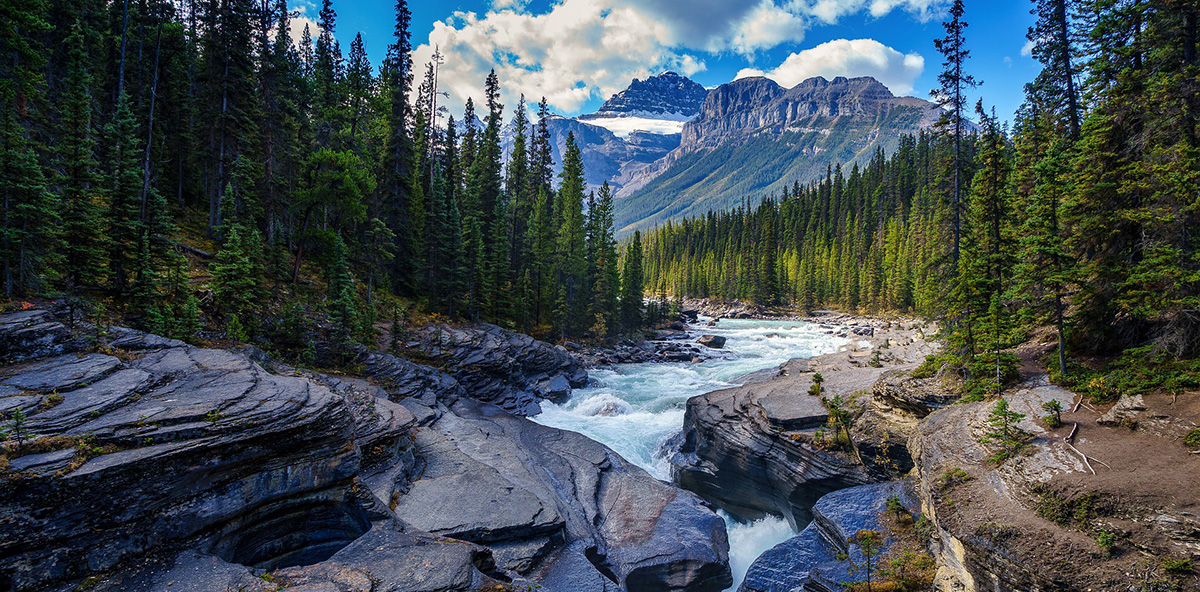
| English | German | IPA |
| Water mass | Die Wassermasse | [ˈvasɐˌmasə] |
| Ocean | Der Ozean | [ˈotseaːn] |
| Sea | Das Meer | [meːɐ̯] |
| Lake | Der See | [zeː] |
| River | Der Fluss | [flʊs] |
| Creek | Der Bach | [bax] |
| Pond | Der Teich | [taɪ̯ç] |
| Sea arm | Der Meeresarm | [ˈmeːʁəsˌʔaʁm] |
| Reservoir | Der Stausee | [ˈʃtaʊ̯ˌzeː] |
| Bay | Die Bucht | [bʊxt] |
| Bayou | Der Bayou | [baˈjuː] |
| Canal | Der Kanal | [kaˈnaːl] |
| River delta | Das Flussdelta | [flʊsˈdɛlta] |
| Hot spring | Die Thermalquelle | [tɛʁˈmaːlˌkvɛlə] |
| Lagoon | Die Lagune | [ˌlaˈɡuːnə] |
| Loch | Der Loch | [lɔx] |
| Mangrove | Die Mangrove | [mɑ̃.ɡʁɔv] |
| Mediterranean sea | Das Mittelmeer | [ˈmɪtl̩meːɐ̯] |
| Mill pond | Der Mühlenteich | [ˈmyːləntaɪ̯ç] |
| Puddle | Die Pfütze | [ˈpfʏt͡sə] |
| Wetland | Das Feuchtgebiet | [ˈfɔɪ̯çtɡəˌbiːt] |
| Bog | Das Moor | [moːɐ̯] |
| Port | Der Hafen | [ˈhaːfn] |
Phrases or idioms that contain landforms in German
If someone mentions a “silence in the forest” in German (Schweigen im Walde), they’re referring to an awkward silence.
To save you from any of those awkward silences in the forest, we’ll make sure you never run out of things to say in German. That’s why we always teach you plenty of idioms that you can use in a conversation.
| German | Literal translation | Meaning | IPA |
| Berge versetzen können | To be able to move mountains | To do something so difficult it’s almost impossible | [ˈbɛʁɡə fɛɐ̯ˈzɛt͡sn̩ ˌkœnən] |
| Wie ein Strich in der Landschaft | Like a line in the landscape | Extremely skinny | [viː aɪ̯n ʃtʁɪç ɪn deːɐ̯ ˈlantʃaft] |
| Wie Sand am Meer | Like sand by the sea | A dime a dozen | [viː ˈzant am ˈmeːɐ̯] |
| Nah am Wasser gebaut sein | To be built close to the water | To cry easily | [naː am ˈvasɐ ɡəˈbaʊ̯t zaɪ̯n] |
| Ins kalte Wasser springen | To jump into the cold water | To jump in at the deep end | [ ɪns kaltɛ ˈvasɐ ˈʃpʁɪŋən] |
| Den Wald vor lauter Bäumen nicht sehen | To not see the forest from so many trees | Can't see the forest for the trees | [deːn valt foːɐ̯ ˈlaʊ̯tɐ ˈbɔɪ̯mən nɪçt ˈzeːən] |
| Es herrscht Schweigen im Walde | There’s silence in the forest | There’s an awkward silence | [ɛs hɛʁʃt ˈʃvaɪ̯ɡn̩ ɪm valt] |
Scenic highlights of German-speaking countries
If you ever get to travel to a German-speaking country, you can look forward to some impressive natural landmarks.
Southern Germany, Austria and Switzerland are filled with forested hills and some larger mountains like the Alps. In the North, Germany flattens out all the way to the North Sea and the Baltic Sea, which offer lovely sandy beaches.
These are some of the scenic highlights that these countries have to offer:
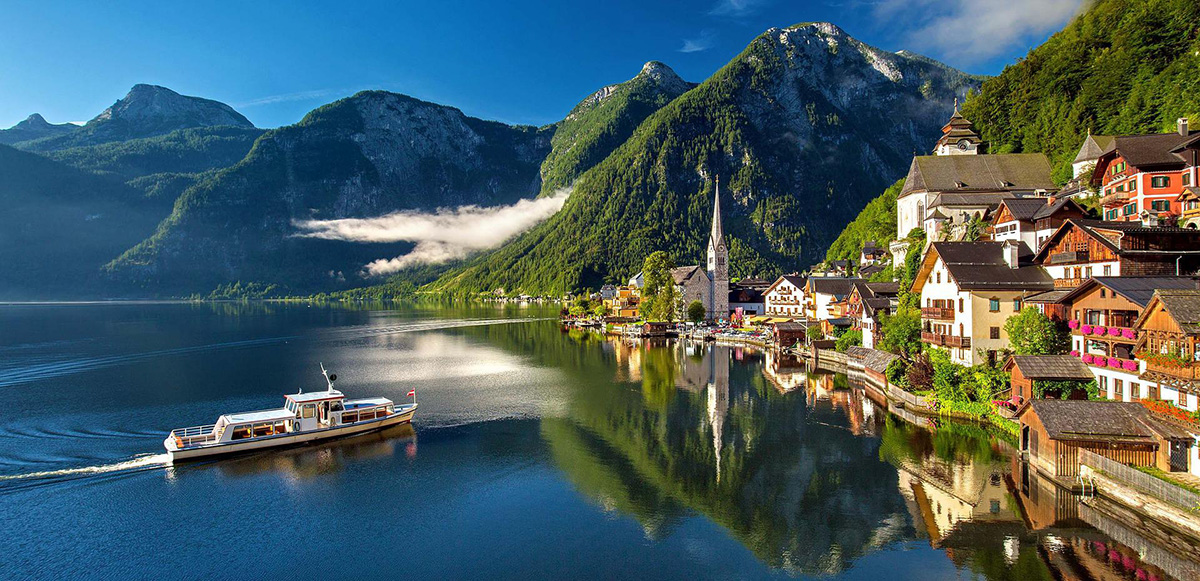
The Black Forest
Despite its name, the Black Forest is a lush green woodland area with an abundance of wildlife and wild plants. What makes it so special is how pure and wild it is: Some areas have been purposefully left untouched by humans for more than 100 years.
This makes it the ideal habitat for a number of rare and endangered birds like the fastest bird in the world, the peregrine falcon, and Europe’s smallest owl, the pygmy owl.
Vulkanland
The Styrian Volcanic Land in Austria gets its name from the remains of volcanoes that are millions of years old and still visible as hills in the region. Today, the area is a popular wine-growing area, so make sure you also try a local German wine when you’re there!
Ostseebäder
Germany has a number of so-called “Ostseebäder” (Baltic Sea Baths) like the Ostseebad Travemünde or Sellin on the island of Rügen. These little gems by the Baltic Sea are places with beautiful sandy beaches and a distinct beach culture.
The Alps
Switzerland, Liechtenstein, Austria and Germany are all Alpine countries, so don’t forget your hiking boots when you’re visiting! If you love nature and especially the mountains, you won’t wanna miss out on this stunning mountain chain!
Lakes Constance
Lake Constance, the so-called “Bodensee” is where Germany, Austria and Switzerland meet. As Germany’s largest lake and the third biggest lake in Europe, it’s a popular tourist destination, with deep blue water and a scenic view of the Alps in the background.
Lake Geneva
Lake Geneva is on the French-Swiss border and offers fancy spa resorts as well as beautiful hiking trails through flowery patches of nature.
Lake Hallstatt
This lake is beautifully situated in Austria’s Salzkammergut region and surrounded by a number of little villages that could be straight from a storybook.
Plan your dream vacation
When you go to bed tonight, you’re probably dreaming of scenic landscapes and counting sheep-shaped clouds above the Alps before you fall asleep. Whether you’ve decided to visit the sandy beaches of the Ostsee or the sleepy towns in the Swiss Alps, your dream vacation is waiting - and the best way to prepare for a trip to a German-speaking country is with a German class of course.
There’s just no better way to experience a country than by chatting to the locals and getting all the insider tips that tourists miss out on. You’ll be fluent in no time because remember, with enough motivation and endurance, you can move mountains!
Whatever it is you want to talk to a German-speaker about, we’ve probably covered it in our extensive German language blog. So make sure to check it out and brush up on your German vocab before you hop on that plane!
